by Romina Ciulli e Carole Dazzi
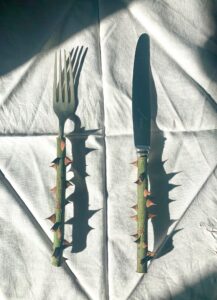
The power of Nature to self-generate and dominate the human action, represents one of the main subjects dealt by Francesca Romana Pinzari in her artistic path. The artist uses a varied series of media including painting, sculpture, performance, video and installations in order to examine concepts such as the individual and collective memory, and reveal intimate and, to a certain extent, ancestral stories.
So an epistemological approach carried out through themes that recall experiences, past, antiquity and even the primordial myths. And it tends to the exploration not only of a personal identity, but also absolute, general one. In fact, her work starts from a performative method that initially is based on her own body and then it extends to cultural, religious, social, physical and visceral themes. An almost ritualistic procedure, achieved through an harmonic mixture of different materials, with which she creates emotional experiences where each individual can identify. And it is exactly this use of several materials, that allows the artist to widen her expressiveness, moving from a substantial practice of control on the artistic work, to a progressive and productive loss of control on the work itself. So that were born projects such as Hair Majesty (2011), Bestiario (2011), Chimere (2012), Cavalli (2012), videos including I ain’t superstitious (2009) o I am not (2011), until the most recent project Casa Spina (2020). Let’s talk with the artist.
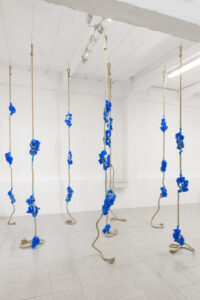
Your path starts from a pictorial method that guaranteed you a fairly solid procedural management, and then it moves to the use of different elements, but with a wider possibility of expression, which allowed you to loosen control over the artistic process itself. Can you tell us how your projects are conceived?
Figurative painting was my very first form of expression. I think its traces are still recognizable in my recent works, despite the fact that over the years my research has led me to experiment with other types of language. My work always comes from an intuition that must be grasped and implemented. The technique with which I create my work depends on multiple factors, sometimes it is inherent in the idea itself, other times the message must be calibrated and then I decide how to represent it.
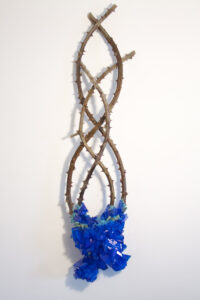
Conceptually Nature is a fundamental element of your research. In fact, there are many natural materials that you use in your sculptures and installations, from organic and vegetable ones, to minerals. What are the reasons that prompted you to work with these elements?
Due to various family vicissitudes I am used to being in close contact with animals and nature since I was a child. But in my work the use of natural elements came suddenly, like some kind of awakening. The thorns of numerous shrubs such as acacia, bramble or rose, became part of my production about eight years ago with some performances, during which I composed bramble clothes to wear them and then burn them. Immediately after I felt the need to make those thorns stable artifacts. And in 2015 my first works made with thorny shrubs took shape. Only later I started the research on the crystallization of salts by creating minerals myself in my studio, and then I combined the two techniques that I still carry out today, experimenting new aspects.
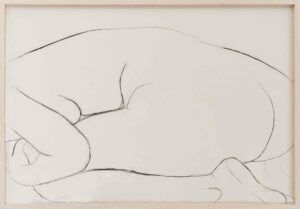
In the work Hair Majesty (2009-2011), hair is the subject on which your attention is focused on. These are portraits where locks of your hair and those taken from the same people depicted, seem to weave a sort of intimate tale between the spirituality of the figure represented and the decontextualized immobility of the body itself. Can you tell us about it?
The first work I made with hair dates back to 2009 and is part of the Love Preservation project, during which, in a surreal way, I preserved the fetishes of my love affair turning them into works of art. Among all the pieces of that project, the one with the hair stood out for its strength, its meaning and its symbolism. I therefore had the desire to go deeper into that research. So many different series of works were born, in which I used my hair, horsehair and other people’s hair from time to time. Each series has a specific message and meaning, while sharing the material used. Hair contains not only the information of our DNA, but also that of our lifestyle, the type of food we eat, medicines, drugs and the pollution of the place where we live. My works fixes all these information in time, making the represented individual immortal through the artwork.
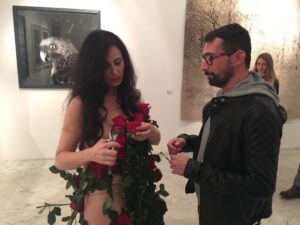
In your research the performative dimension also plays a central role. The body, in fact, becomes a means to explore concepts such as cultural and religious identity. Do you think that this artistic practice generates a more intimate fruition for the audience, that facilitates empathy?
A good artist, who is also a good performer, should create an empathic bond with the audience. Nowadays, unfortunately, performance is very fashionable, and I say unfortunately because there are too many around, often devoid of meaning, emphasis, culture and emotion. Personally, I believe that the work of art should generate emotions and not just make people reflect on certain topics. I don’t think performance is more engaging than painting, sculpture or other forms of art. It is just an expressive medium towards which I have a deep respect and devotion. In fact, I tend to make very few of them and I put them into practice only when I feel that the action I have thought and the way to carry it out are really coherent, necessary and engaging.
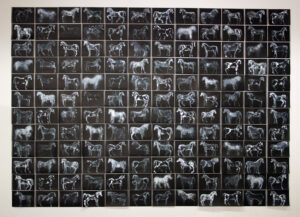
Subsequently, in your works you can feel the transition from a more intimate exploration to a reflection focused on collective identity. In the Bestiario paintings (2012), for example, or in Cavalli (2012), the animals, all different in their uniqueness like humans themselves, bring out the anxieties and fears of contemporary man, thus creating a sense of ancestral commonality. Actually, isn’t it precisely from this concept of belonging that the constitutive individuality of the individual emerges?
We are unique and unrepeatable human beings. Yet, we have a strong need for belonging. We are social animals and we belong to the pack, as the pack belongs to us. Each, with its extraordinary and unique particularities, is interconnected with the others physically and spiritually. The individual and the community are always closely linked. Even in my production they have never been split. In some works, one aspect is simply more evident than the other.
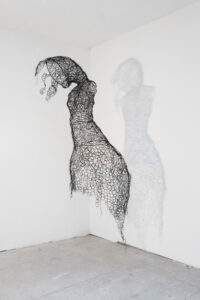
In Chimere instead (2011-2013), which is part of a project called Hair works, you create horsehair sculptures. The result is a sort of almost sacred story, which tries to investigate aspects such as intimacy and sharing, memory and illusion. How much does the symbolic aspect of objects become a way to tell emotions and archetypes of the collective unconscious?
A fundamental aspect of all my works is a sort of performative rituality that emerges not only in my public performances, but also in the creation of sculptures and installations. These are actions that I practice alone and that no one can see, but which are perceived through the fruition of the finished work. In Chimere in particular, we can sense the time spent in the stables to collect horsehair and that to make hundreds and hundreds of small knots on each lock of hair. The anthropomorphic and zoomorphic aspect of these large suspended exoskeletons that turn on themselves, projecting monstrous shadows on the wall, is nothing more than the representation of our deepest self made up of angels, demons, illusions, dreams and chimeras. It is our most beautiful and at the same time the scariest part.
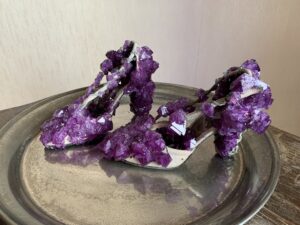
Your most recent project is titled Casa Spina (2020): an installation staged in the exhibition space of Casa Vuota in Rome. A “site specific” show in which Nature, through elements such as thorns and crystals, reacquires its atavistic power of self-generation, re-appropriating everyday, familiar objects and transforming them into unexpected works of art, which evoke a lost time. All this generates in the viewers a feeling of suspension, timelessness and indefinite waiting, loading the fruition of psychological aspects, somehow fantastic, but also aggressive. Can you tell us about this experience, also in light of the recent events that have struck us?
The exhibition opened about a week before the first lockdown. When we were finally able to reopen its doors together with the curators of Casa Vuota Francesco Paolo del Re and Sabino de Nichilo, we became aware of some premonitory aspects of that exhibition project. The objects in the exhibition literally crystallized inside a closed house referred to abandonment, violence, waiting and confinement. Rebelling against their primary function, they become sharp, embellished and corroded. Thorny cutlery which can no longer be held, overturned chairs on which one can no longer sit, my mother’s wedding shoes crystallized with colours similar to amethyst that can no longer be worn, and paintings that lose their original appearance through burns, thorny bushes and crystalline growths.
In your artistic research we also find video works. Among these we wish to mention I ain’t superstitious (2009), a performance imbued with symbolism, archetypes and values that are broken. What is the message you intended to communicate?
I ain’t superstitious was my first public performance, from which I realised a video work. As always during my actions and my works I try to overcome my limits, my beliefs and my fears. I have always been very superstitious, so I had to use all my courage to walk into the church dressed as a bride on Friday and step on about 20 meters of mirrors resting on the ground, breaking them one by one under my heels. This action wanted to talk about all the traditions and superstitions related to our culture that sometimes must be overcome and abandoned. This is because not only they no longer reflect the times we live in, but often they cause patriarchal, repressive, violent, racist or, in worst cases, misogynistic legacies. On the other hand, our culture and our traditions are the chisels with which we have been modeled and denying and abandoning them is fruitless, just like wanting to erase chapters of our history. This is why the bride smashes the mirrors under her feet and at the same time her reflection is shattered.
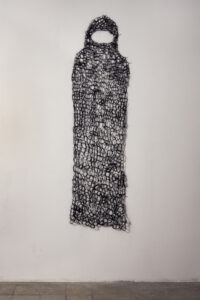
Who are the artists who have inspired you in your artistic career or by which you are currently inspired?
Today I can tell you Mona Hatoum, Sophie Calle, Pierre Huges and Fiona Hall. But I admit that I give a different answer every time I’m asked this question. Not only because the list of artists I respect and follow is actually very long and constantly updated, but also because, depending on the moment, my feelings and my art, I feel closer to some rather than others.
Can you tell us about your future projects?
I have just finished a work that will be part of a large public exhibition on Italian art at the Museum of Contemporary Art in Sao Paulo in Brazil which will be inaugurated at the end of May. I also have other projects that are temporarily suspended waiting to be completed at the end of this emergency. Meanwhile I study, document, observe and produce few, but heartfelt works of art.
Biography: Francesca Romana Pinzari was born in Perth, Australia, lives and works in Rome. She uses different techniques and materials, ranging from sculpture to performance through installation, painting and video. Her projects talk about cultural, physical and religious identity, the memory and the relationship between human being and nature. One of her best known and longest-lived cycles of works is composed of large sculptures made of horsehair and finely braided hair with a strong symbolic and archetypal appeal. In her latest works she created thorny branches and crystalline concretions which merge to shape sculptural installations, very similar to precious ex-votos that conceal mysterious alchemical rituals. Among her main exhibitions: SuperNatural at Gilda Contemporary Art, Milano, Transition of Energy, Musei di Kajaani, Kokkola and Kotka in Finland, at the Kunsthalle of Bratislava, the Performance Night at Museo Galeria Miejska BWA Bydgoszcz, in Poland, the exhibition Nonostante tutto, Galleria Oltredimore, Galleria + of Boulogne, the Bethanien Museum of Berlin with a project room of 24h in occasion of the exhibition Arty Party.